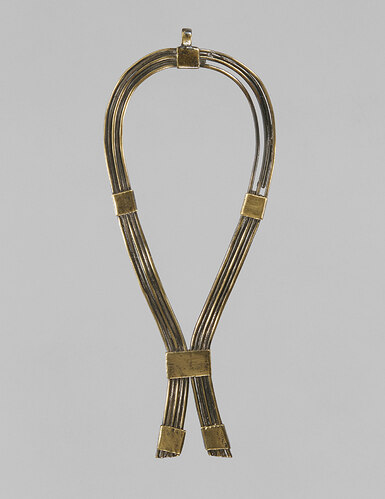I want to thank everybody for providing sources, but I did not
stated my questioned correctly in the first place so I will restate
it
now.
Victoria made a point that electrum was used in Ancient Egypt prior
to Ancient Greece. Everything what I have read indicates that origin
of this alloy cannot be dated to Ancient Egypt. Bellow are few
examples:
According to Ancient Records of Egypt by James Henry Breasted all
electrum in Ancient Egypt was imported. Here are some excerpts:
Punt, 80,000 measures of myrrh, [6,000]… of electrum, 2,600 […]
staves, […] Every [statue] is overlaid on its body with electrum
of Emu … necklaces, amulets, and pendants of real electrum,
brought to his majesty from the south countries as their yearly
impost
The first trading expedition in Ancient Egypt, recorded on the walls
of tomb of Harkhuf, was dated to 2300 BC. It was spice-trading
venture into Nubia.
The first expedition to Punt is dated to 1500 BC. Punt was the source
of naturally occurring electrum.
Neither of Punt, nor Emu were technologically advanced, so the most
likely scenario is that manufactured electrum was the result of
trade between Phoenicia and these kingdoms. The whole timeline is
contemporaneous with the height of Minoan Civilization.
Also electrum was the first metal used for coinage and the first
coins were produce in Ionia dating to 650 BC.
There are numerous other examples indicating contemporaneous use but
I am not aware of a single one, pinning down the claim that electrum
was used in Ancient Egypt prior to Ancient Greece.
As a possible source of confusion, there was an alloy in Ancient
Egypt called asem, recipe follows:
Manufacture of asem :Tin, 12 drachmas; quicksilver, 4 drachmas;
earth of Chios, 2 drachmas. To the melted tin add the powdered earth,
then add the mercury, stir with an iron, and put it into use.
Asem is also known under name of “eleetrum”. This alchemical recipe
was to make electrum from common components, but it does not
indicate that electrum was used in Ancient Egypt prior to Ancient
Greece.
My question is:
Does anybody know of a reference which pins down the proposition,
and I mean dates, records, names, and etc, that Ancient Egypt was
using electrum prior to Ancient Greece, and what was the name of that
alloy which is now known as electrum ? As I mentioned before electrum
has etymological roots indicating Greek origin.
Leonid Surpin.
